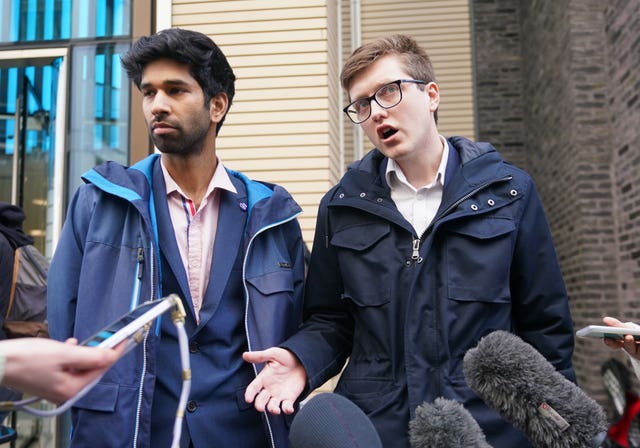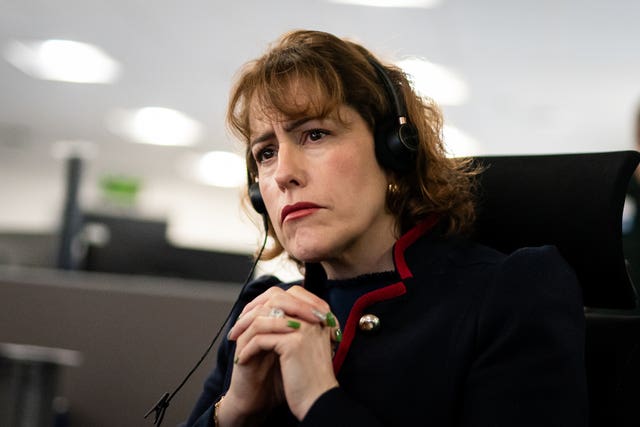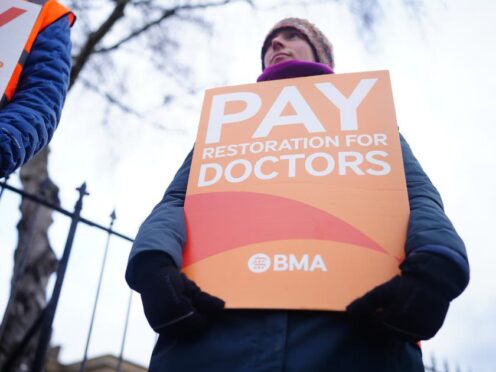Junior doctors in England have been urged to call off strikes and “show they are prepared to be reasonable” as they walk out for the 10th time since March last year.
It comes amid calls from health chiefs for unions and ministers to settle the dispute.
The latest junior doctors’ strike will begin at 7am on Saturday, with them returning to work at 11.59pm on Wednesday.
Dr Robert Laurenson and Dr Vivek Trivedi, co-chairs of the BMA junior doctors committee, said: “The Government could have stopped these strikes by simply making a credible pay offer for junior doctors in England to begin reversing the pay cuts they have inflicted upon us for more than a decade.

“The same Government could have even accepted our offer to delay this round of strike action to give more space for talks – all we asked for in return was a short extension of our mandate to strike.
“The fact that ministers have chosen strike action over what could have been the end of this year’s pay dispute is disappointing to say the least.”
They claim “more and more” junior doctors are moving abroad for better-paying jobs, adding: “All doctors are looking for is to reverse pay cuts and be paid the same, in real terms, as in 2008 – which looks like around £21 per hour instead of the current £15 per hour.
“This is the way to a better-staffed, more effective health service, and all the Government has to do to call off these strikes is come forward with a credible way of getting there.”
Health Secretary Victoria Atkins said: “I want to see doctors treating patients, not standing on picket lines.

“In negotiations with the BMA junior doctors committee, we made it clear we were prepared to go further than the pay increase of up to 10.3% that they have already received. They refused to put our offer to their members.
“More than 1.3 million appointments and operations have already been cancelled or rescheduled since industrial action began – five days of further action will compound this.
“The NHS has robust contingency plans in place, and it is vital that people continue to come forward for treatment. But no one should underestimate the impact these strikes have on our NHS.
“So again, I urge the BMA junior doctors committee to call off their strikes and show they are prepared to be reasonable, so that we can come back to the negotiating table to find a fair way forward.”
The strike will be the 10th round of industrial action by junior doctors since March 2023, and the last under its current mandate.
However, Dr Laurenson and Dr Trivedi said they expect the mandate to be renewed into the autumn given the “strength of determination shown by junior doctors across the country”.
They added: “There is no point in the Government delaying any further. The time to end this dispute is now.”
NHS national medical director Professor Sir Stephen Powis said it is “extremely concerning” that strike action and disruption “are becoming a ‘new normal’”.
“For the equivalent of more than one in every 10 days last year, the NHS has had to effectively stop carrying out most routine appointments to prioritise emergency care,” he added.
“The impact of this over a prolonged period continues to build at a time where staff are already under pressure, tackling the elective backlog and focusing on recovery.”
Sir Julian Hartley, chief executive of NHS Providers, has urged unions and the Government to “redouble their efforts to find a resolution”.
Deputy chief executive Saffron Cordery reiterated Sir Julian’s call, saying: “We can’t go on like this. Wave after wave of strikes saps the morale of staff and impacts patients.
“Trust leaders urge the Government and unions to do everything possible to settle this damaging dispute and to end strikes.”
Ms Cordery added: “Trust leaders want to get on with the job of giving patients first-class care instead of having to spend too much time and energy planning for and coping with weeks of disruptive strikes.”
A blog post by the King’s Fund’s Siva Anandaciva, who is a chief analyst in the think tank’s policy team, said “strikes have become such a familiar feature of our lives over the past two years that there is a risk we can become inured to their impact”.
